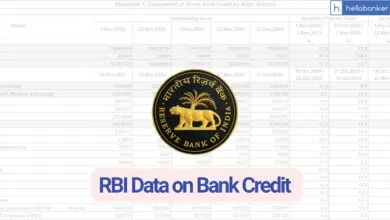Last 5 Years NPA Data of Public Sector Banks

| Get instant news updates: Click here to join our Whatsapp Group |
Non-Performing Assets (NPAs) have been a critical concern for India’s banking sector, especially in Public Sector Banks (PSBs). However, over the last five financial years, the gross NPAs of PSBs have shown a consistent decline, reflecting the impact of various reforms and recovery mechanisms implemented by the Government of India and the Reserve Bank of India (RBI).
Gross non-performing assets (NPAs) of public sector banks have been declining during the last five financial years, the details are as under:
| As on | Gross NPAs (Amount in crore ₹) | Gross NPA Ratio (%) |
|---|---|---|
| 31.03.2021 | 6,16,616 | 9.11 |
| 31.03.2022 | 5,40,958 | 7.28 |
| 31.03.2023 | 4,28,197 | 4.97 |
| 31.03.2024 | 3,39,541 | 3.47 |
| 31.03.2025 | 2,83,650 | 2.58 |
Comprehensive measures have been taken by the Government and the Reserve Bank of India (RBI) to recover and reduce NPAs. These measures include, inter alia, the following:
- Change in credit culture: The Insolvency and Bankruptcy Code (IBC) has fundamentally changed the creditor-borrower relationship, taking away control of the defaulting company from promoters/owners and debarring wilful defaulters from the resolution process. Personal guarantors to corporate debtors have also been brought under the ambit of IBC.
- Legislative amendments: The Securitisation and Reconstruction of Financial Assets and Enforcement of Security Interest Act, 2002 and the Recovery of Debt and Bankruptcy Act have been amended to strengthen their effectiveness.
- Enhanced jurisdiction of DRTs: The pecuniary jurisdiction of Debt Recovery Tribunals (DRTs) was increased from ₹10 lakhs to ₹20 lakhs, enabling them to focus on high-value cases and improve recovery outcomes.
- Specialized recovery infrastructure: Public Sector Banks have set up specialized stressed assets management verticals and branches to monitor and follow up on NPAs more effectively. Deployment of Business Correspondents and the Feet-on-Street model has also boosted recovery.
- Prudential Framework: RBI issued a Prudential Framework for resolution of stressed assets to encourage early recognition, reporting, and time-bound resolution, with incentives for early adoption of resolution plans.
As per RBI guidelines, banks have a board approved policy in place for valuation of properties done by professionally qualified independent valuers. RBI mandates banks to have a procedure for empanelment of professional valuers based on prescribed minimum qualifications and maintain a register of approved list of valuers.
Valuation of fixed assets is done before sanction of loan to a borrower as part of the appraisal process and before sale to recover dues under SARFAESI Act, 2002. In order to maintain transparency, for properties valued at Rs 50 crore or above, banks obtain minimum two independent valuation reports. Upon enforcement of security interest for an NPA account, the bank takes possession of the property and obtains valuation from an approved valuer before disposing it off.
RBI, vide its guidelines on sale of stressed assets by banks, has stated the use of e-auction as a desirable mode in sale of properties as it would attract a wide variety of borrowers and enable a better price discovery.
As per RBI master circular on Income Recognition, Asset Classification and Provisioning (IRAC) norms dated July 1, 2015, collateral such as immovable properties charged in favour of the bank should be valued once in three years by empanelled valuers. Further, Joint Lenders Forum (JLF) guidelines, issued by RBI in February 2014, empower banks to seek explanation from valuers who overstate security value and henceforth report their names to Indian Banks Association (IBA).
